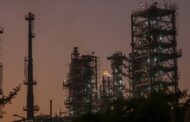Headlines like that give answer to common concerns about the grid and its limited transmission capacity. For the first time, Mid-west utilities are investing as much as $10 billion in more than 2,000 miles of added transmission. The 18 new transmission lines are a step in the right direction however, industry experts are voicing valid concerns.
- “Transmission typically is always lagging…” Transmission Authority Director Claire Vigesaa started.
- “To double or triple the capacity of our grid, it cannot continue to take 10 to 15 years to build each line,” said Gary Moody, who leads the Audubon Society’s transmission initiative. “We need to do it better and faster.”
- Midcontinent Independent System Operator (MISO), is “inching forward” and has “miles to go,” said Toba Pearlman, a Natural Resources Defense Council attorney who leads the group’s Midwest renewables advocacy.
Referring to new lines, Priti Patel, the chief transmission officer for Great River Energy, said, “It’s not as shiny as a solar panel or an electric vehicle or a wind turbine, but this is absolutely the type of work you need if we want to decarbonize the economy.”
New transmission lines may lackluster when compared to new sources of energy, but they are equally important to the equation. Meeting demand, reaching net-zero, and connecting renewables, all depend on transmission capacity. According to researchers at Princeton University’s ZERO Lab, half the emissions reductions promised by the Inflation Reduction Act between now and 2030 could get cut if transmission upgrades continue at this pace.
Basin Electric Power Cooperative has two new transmission projects and TransWest Express Transmission Project started on a line that will provide 3,000 megawatts of new transmission capacity to parts of Wyoming, Colorado, Utah, and Nevada.
Upgrades are imperative and building new lines on established rights-of-ways will make the process easier but how can they make it faster? What is your utility doing to make history?













